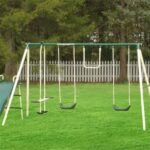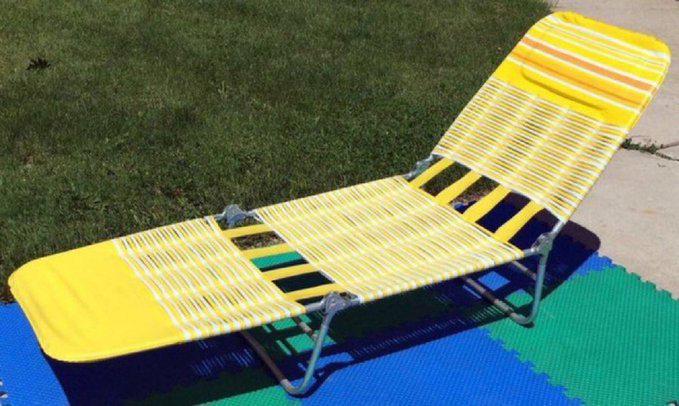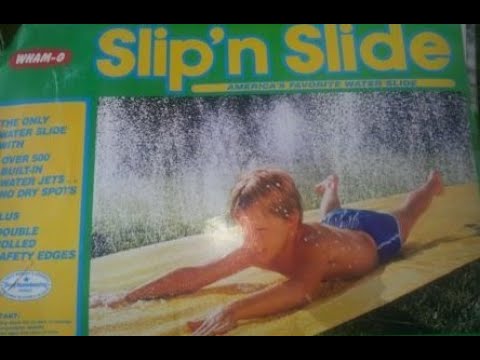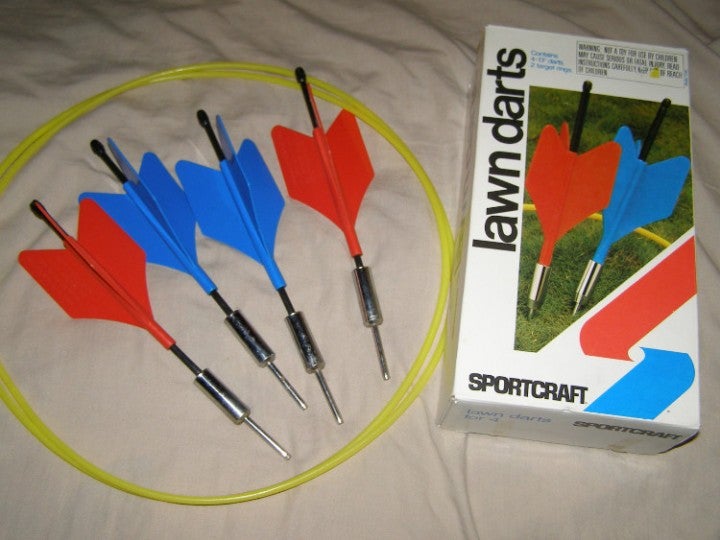 Before playgrounds became rubber-coated wonderlands of molded plastic and padded flooring, before every suburban backyard featured a cedar-stained fortress with stainless steel slides and climbing walls, there was the humble 1980s metal swing set. Usually tucked into a corner of the backyard, often a hand-me-down or assembled during a long Saturday afternoon with a wrench and an open beer, these steel-framed contraptions were the crown jewel of childhood. They weren’t sleek. They weren’t particularly safe. But to a kid growing up in the ’80s, they were everything—our jungle gyms, our rocket ships, our roller coasters, and our launching pads into imagination.
Before playgrounds became rubber-coated wonderlands of molded plastic and padded flooring, before every suburban backyard featured a cedar-stained fortress with stainless steel slides and climbing walls, there was the humble 1980s metal swing set. Usually tucked into a corner of the backyard, often a hand-me-down or assembled during a long Saturday afternoon with a wrench and an open beer, these steel-framed contraptions were the crown jewel of childhood. They weren’t sleek. They weren’t particularly safe. But to a kid growing up in the ’80s, they were everything—our jungle gyms, our rocket ships, our roller coasters, and our launching pads into imagination.
The typical 1980s swing set was made of thin, tubular metal—painted white, brown, or green and often festooned with stripes, decals, or awkward rainbow stickers. Most had two plastic swings suspended by chains that pinched your fingers if you weren’t careful, a trapeze bar that no one really used, and a slide so steep and slick it could double as a bobsled run in the right weather. If you were lucky, yours had a two-seater glider—those clunky seesaw-like attachments that encouraged teamwork and bruised shins in equal measure. At the very top was a metal crossbar, the sacred backbone of the structure, often decorated with rust streaks and the faded logo of whichever department store sold it.
What these swing sets lacked in polish, they made up for in personality. Unlike today’s commercial play structures, each metal swing set took on a life of its own. Some rattled when you swung too high, others had a slight tilt from being poorly anchored into the grass. A few had that one leg that always creaked or lifted an inch off the ground when both swings were in use. The slide was usually bolted to the frame and dented at the base from a generation of landings. The ladder rungs were narrow and harsh on bare feet. But we didn’t care. This was our kingdom.
As kids, we tested the limits of those metal beasts. We tried to swing “high enough to go over the top,” a feat we were always told was impossible but whispered about by older kids like some urban legend of the playground. We dared each other to jump at the peak of the arc, launching into the air with the grace of Olympic long jumpers and landing with varying degrees of success. The goal wasn’t safety—it was style. Could you land on your feet? Could you stick the landing without stumbling? Could you twist in mid-air like some suburban Evel Knievel?
Then there was the slide. It looked innocent enough from a distance, a gentle slope of molded metal shining in the sun. But in the heat of July, it became a searing strip of doom. Kids quickly learned to test it with the back of a hand before daring a full sit. Those who forgot often yelped and scrambled off, legs covered in faint red lines. But we came back anyway, armed with towels or sprinkler water to cool it down. Sliding wasn’t just about speed—it was about survival.
The glider was always a wildcard. Usually designed for two kids to sit back-to-back, pumping their legs in opposite directions, it was the most complicated and least ergonomic feature of the swing set. It clanked and squeaked with every movement, and if one person bailed mid-ride, the other was usually sent flying. But when it worked—when the rhythm was just right—it felt like magic. You and your friend levitating in harmony, creaking your way skyward, laughing like maniacs. For about 30 seconds, it felt like a ride at the county fair.
These swing sets weren’t just playground equipment. They were social hubs. Neighborhood kids would congregate in the yard of whichever house had the newest set, taking turns, inventing games, negotiating who got the swing next. You might start a morning solo, absently swinging and singing to yourself, only to be joined minutes later by two more kids and a plan to build a “rocket ship” using the swing set and some cardboard. Every part of the structure became something else—a ship mast, a monkey cage, a time machine. Imagination filled in the gaps that design never intended.
And yet, despite all the fond memories, those metal swing sets were kind of dangerous. They rusted easily. The bolts came loose. The chains wore down. The entire structure could tip if not properly staked into the ground. If you weren’t paying attention, you could smack your head on the crossbar, skin your knee on the ladder, or pinch your hand between the chains and the seat. But growing up in the ’80s meant growing up with a bit of risk. It was accepted, even expected. You got hurt, you cried, you got a Band-Aid—and you got back on the swing.
Parents treated the set with a similar practicality. Once installed, it was rarely moved or maintained. Occasionally a swing seat would crack and be replaced with a mismatched one from a hardware store. Sometimes the whole thing was hosed down, or the grass beneath it worn to dirt from endless footsteps and dragging sneakers. The swing set became a fixture, as permanent as the garden hose or the grill. And when it eventually rusted beyond repair, it wasn’t torn down—it stood there for years like a skeletal monument to summers gone by.
The rise of big-box retailers and suburban development in the 1980s made these swing sets accessible to almost every family. Sears, Kmart, Montgomery Ward, and JCPenney all sold them. Assembly was a weekend ritual, often involving a frustrated dad, an unclear instruction sheet, and a few spare parts left over. But once the last bolt was in place and the first kid climbed up the slide, there was a quiet sense of victory. You had built something. Something that would wobble and whine and wobble some more—but would carry countless memories.
By the time the 1990s rolled around, plastic began to replace steel. Vinyl-coated sets became the norm. Safety standards increased. Padding was added. Slides were no longer blistering sheets of metal but curving, forgiving tubes of molded plastic. It was all smarter, all safer. But something was lost in the transition. The grit, the challenge, the strange charm of those old metal swing sets faded away.
For those who grew up with them, they live on in memory. They were the backdrop of birthday parties, summer boredom, first kisses, scraped knees, and quiet moments under the stars. You didn’t need a screen or a Wi-Fi signal. You just needed a backyard, some good weather, and a little bit of bravery. The creak of the chains, the rust on your hands, the wind in your face as you swung higher and higher—that was the sound of being alive in the 1980s. And if you closed your eyes just right at the peak of your swing, you really did feel like you could fly.


